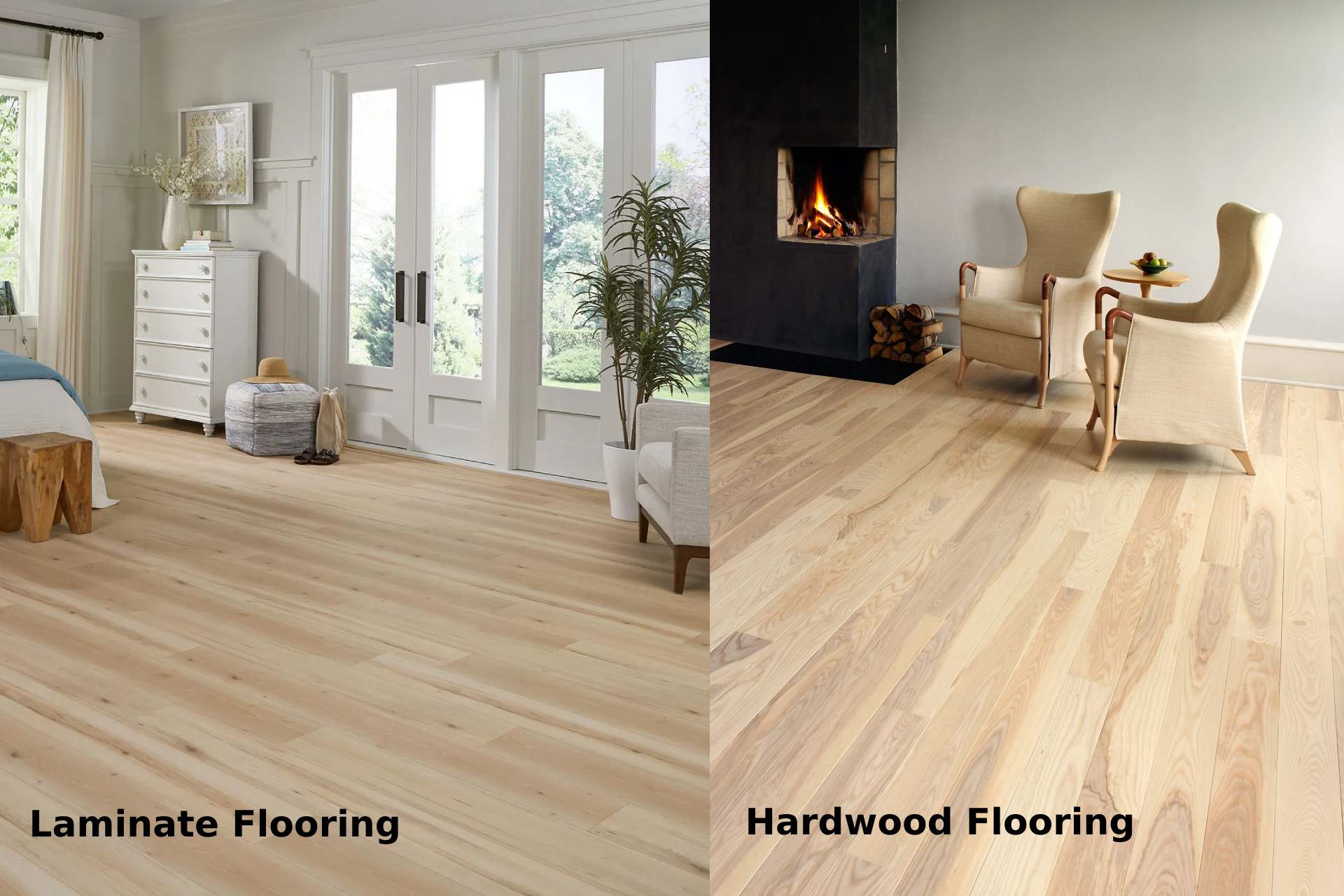Choosing the right flooring for your home is a significant decision that can impact both its aesthetic appeal and functionality. Among the myriad of flooring options available, laminate and hardwood are two popular choices known for their durability, versatility, and timeless appeal. However, each material has its own unique characteristics, benefits, and drawbacks. In this comprehensive guide, we will delve into the differences between laminate and hardwood flooring to help you determine which option is best suited to your needs and preferences.
Understanding Laminate Flooring
Laminate flooring is a synthetic flooring material composed of multiple layers fused together through a lamination process. The top layer, or wear layer, is a transparent, protective coating that provides resistance to scratches, stains, and fading. Beneath the wear layer, there is a high-resolution image layer that replicates the look of natural materials, such as hardwood, stone, or tile. The core layer is typically made of high-density fiberboard (HDF) or medium-density fiberboard (MDF), providing stability and structural integrity. A backing layer adds additional support and moisture resistance.
Key Characteristics of Laminate Flooring
- Cost-Effective: Laminate flooring is generally more affordable than hardwood, making it an attractive option for budget-conscious homeowners.
- Durability: The wear layer of laminate flooring provides excellent resistance to scratches, stains, and fading, making it ideal for high-traffic areas.
- Easy Maintenance: Laminate flooring is relatively easy to clean and maintain, requiring regular sweeping and occasional mopping with a damp cloth.
- Versatility: Laminate flooring comes in a wide range of styles, colors, and textures, allowing homeowners to achieve the look of natural materials without the associated cost or maintenance.
- Installation: Laminate flooring is often available in planks or tiles with a click-lock or glueless installation system, making it suitable for DIY installation projects.
Drawbacks of Laminate Flooring
- Limited Refinishing: Unlike hardwood flooring, laminate cannot be sanded and refinished to repair scratches or damage. Once damaged, the affected planks must be replaced.
- Susceptible to Moisture: While laminate flooring is more resistant to moisture than hardwood, it can still be damaged by excessive moisture or standing water. Proper installation and maintenance are essential to prevent water damage.
- Authenticity: While laminate flooring mimics the look of natural materials, some homeowners may prefer the authenticity and warmth of genuine hardwood.
Exploring Hardwood Flooring
Hardwood flooring is a timeless and classic option that adds warmth, elegance, and character to any home. It is made from solid wood planks or engineered wood, which consists of multiple layers of wood veneer stacked and bonded together. Hardwood flooring is available in various species, including oak, maple, cherry, and walnut, each with its own unique grain patterns and colors. It can be finished with different stains, sealants, or surface treatments to enhance its durability and aesthetic appeal.
Key Characteristics of Hardwood Flooring
- Timeless Beauty: Hardwood flooring exudes warmth, charm, and sophistication, adding value and visual appeal to any space.
- Longevity: With proper care and maintenance, hardwood flooring can last for generations, retaining its beauty and durability over time.
- Versatility: Hardwood flooring is available in a wide range of species, grades, widths, and finishes, allowing homeowners to customize their flooring to suit their style and preferences.
- Natural Variation: Each hardwood plank is unique, featuring distinct grain patterns, knots, and color variations that add character and personality to the floor.
- Refinishing Options: Unlike laminate flooring, hardwood can be sanded and refinished multiple times to repair scratches, dents, or surface imperfections, extending its lifespan and beauty.
Drawbacks of Hardwood Flooring
- Cost: Hardwood flooring is typically more expensive than laminate, making it a significant investment for homeowners.
- Vulnerability to Damage: While hardwood flooring is durable, it is susceptible to scratches, dents, and moisture damage, especially in high-traffic areas or humid environments.
- Maintenance: Hardwood flooring requires regular maintenance, including sweeping, vacuuming, and occasional refinishing to preserve its appearance and durability.
- Environmental Impact: Some hardwood species may be sourced from unsustainable forestry practices, leading to environmental concerns. However, eco-friendly options, such as reclaimed or FSC-certified hardwood, are available.
Choosing the Right Flooring Option for You
Now that we’ve explored the key characteristics and differences between laminate and hardwood flooring, how do you decide which option is right for you? Consider the following factors:
- Budget: If you’re working within a tight budget, laminate flooring may be the more cost-effective option, offering the look of hardwood at a fraction of the cost. However, if you’re willing to invest in the long-term beauty and value of your home, hardwood flooring may be worth the initial expense.
- Lifestyle and Use: Consider your lifestyle and the level of foot traffic in your home. If you have pets, and children, or frequently entertain guests, durability and scratch resistance may be important factors to consider. Laminate flooring is highly durable and resistant to scratches, making it ideal for active households. However, if you value authenticity and natural beauty, hardwood flooring may be the preferred choice despite its susceptibility to scratches and dents.
- Aesthetic Preferences: Both laminate and hardwood flooring offer a wide range of styles, colors, and textures to suit various design aesthetics and preferences. If you prefer the warmth and authenticity of natural wood, hardwood flooring may be the ideal choice. Alternatively, if you’re looking for a budget-friendly option with versatile design possibilities, laminate flooring may be more suitable.
- Maintenance and Upkeep: Consider your willingness to maintain and care for your flooring over time. Laminate flooring requires minimal maintenance, with easy cleaning and occasional replacement of damaged planks. On the other hand, hardwood flooring requires regular sweeping, vacuuming, and refinishing to preserve its appearance and durability. If you prefer low-maintenance flooring, laminate may be the preferable option.
- Environmental Considerations: If sustainability and eco-friendliness are important factors for you, consider the environmental impact of your flooring choice. While both laminate and hardwood flooring have environmental pros and cons, eco-friendly options, such as FSC-certified hardwood or laminate made from recycled materials, are available for environmentally conscious homeowners.
Conclusion – Laminate vs. Hardwood: Which Flooring Option is Right for You?
Choosing differences between laminate and hardwood flooring ultimately depends on your budget, lifestyle, aesthetic preferences, maintenance requirements, and environmental considerations. While laminate flooring offers affordability, durability, and versatility, hardwood flooring exudes timeless beauty, warmth, and authenticity. Consider weighing the pros and cons of each option to determine which flooring material best suits your needs and preferences. Whether you opt for the budget-friendly practicality of laminate or the timeless elegance of hardwood, investing in quality flooring can enhance the beauty, value, and comfort of your home for years to come.


